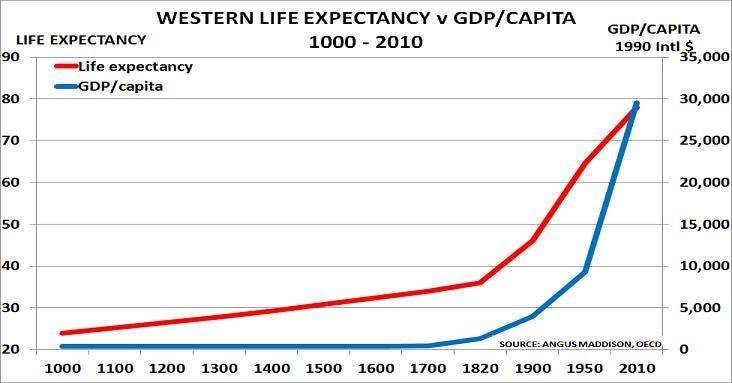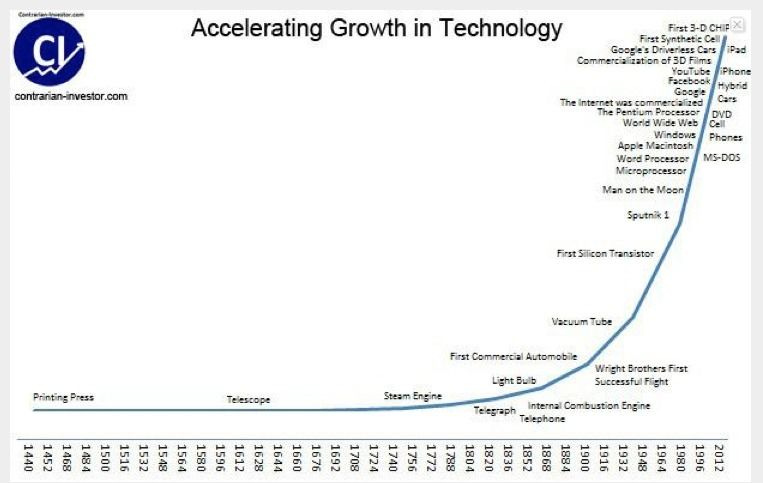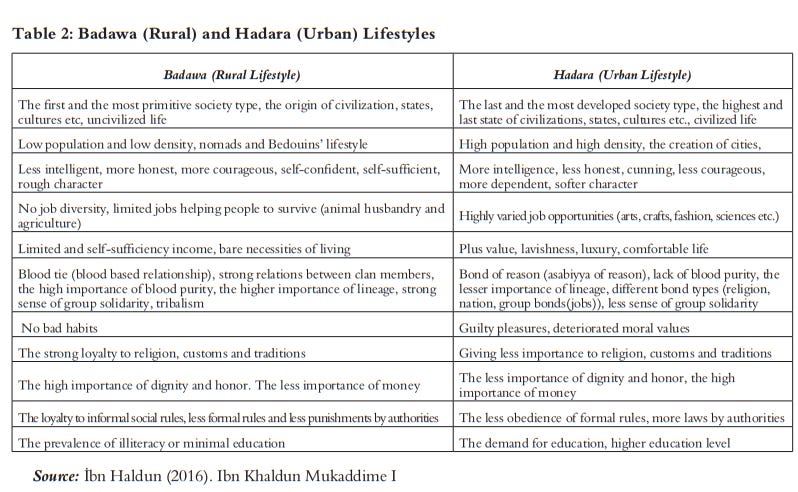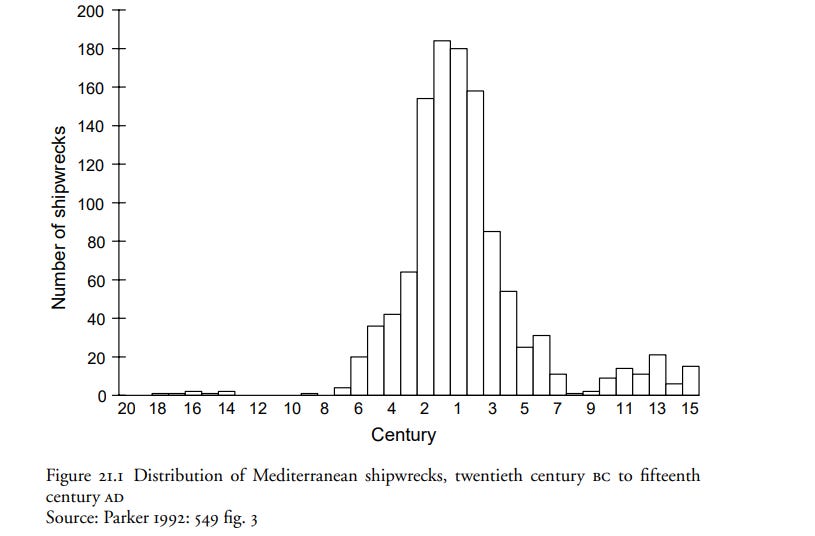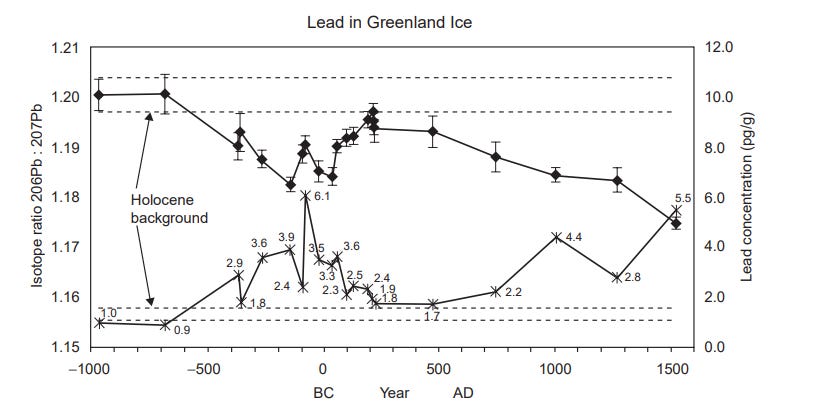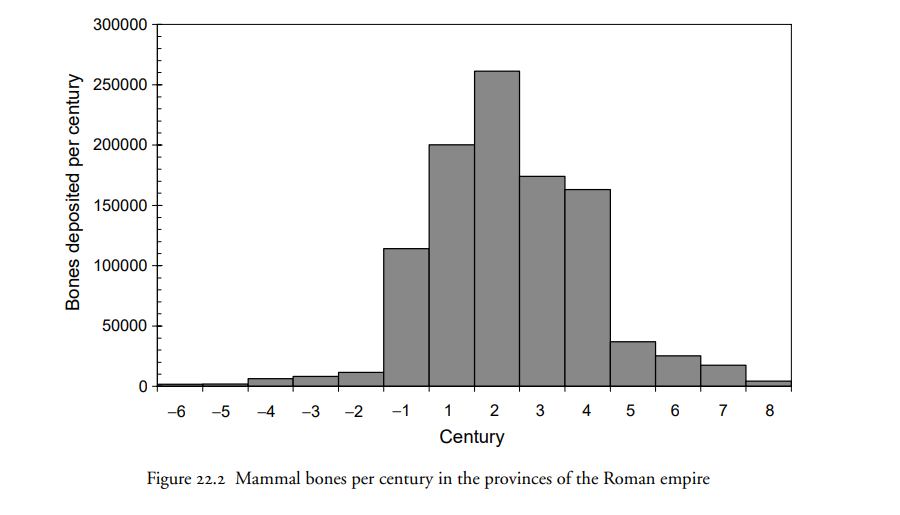We have fallen upon evil times and every man wants to write a book.
Spend enough time as a pessimistic doomsayer and you will eventually encounter a particular breed of optimistic hopespeaker who simply refuses to acknowledge the decayed state of our contemporary society. Engage one of these pink-lensed futurists in debate, and you will inevitably find yourself confronted by this quote by Naram Sim of the Akkadian Empire:
We have fallen upon evil times. The world has waxed old and wicked. Politics are very corrupt. Children are no longer respectful to their elders. Each man wants to make himself conspicuous and write a book.
After tweeting this quote at you, the optimistic hopespeaker will say something like “This just goes to show that stupid doomsayers like you have been warning about the end of the world for 5,000 years!”
The hopespeaker is, of course wrong. Because Naram-Sim was right. His civilization was doomed. But hold that thought.
Naram Sim’s wisdom only recently reached the United States. Professor G. T. W. Patrick of the University of Iowa he visited the Imperial Museum of Constantinople in 1913 and saw the 5,000-year old tablet upon which the words were engraved. His viewing prompted him to write an article for Popular Science entitled “The New Optimism.” In it Professor Patrick made the following claim:
[Naram-Sin’s] old and ever-recurring complaint does not depend upon any actual deterioration of the times, for the times are constantly growing better. It comes usually from older people whose outlook may be biased by subjective conditions due to decaying powers and by the tendency to regard all changes as changes for the worse, the only really good times being the bright days of our own youth. [emphasis added]
Professor Patrick’s quote perfectly encapsulates what is nowadays known as Whig historiography. Infogalactic helpfully defines Whig historiography for us:
Whig history or Whig historiography is an approach to historiography that presents the past as an inevitable progression towards ever greater liberty and enlightenment, culminating in modern forms of liberal democracy and constitutional monarchy. In general, Whig historians emphasize the rise of constitutional government, personal freedoms, and scientific progress…
Whig history is a form of liberalism, putting its faith in the power of human reason to reshape society for the better, regardless of past history and tradition. It proposes the inevitable progress of humankind.
Whig history is a necessary consequent of certain strands of Enlightenment thought. As I pointed out my article Why Has Our World Gone So Crazy?, the contemporary consensus today holds that human nature is unconstrained by biology and as such can be ceaselessly improved. If you start with that presupposition, and conjoin it with a belief in the ongoing advance of technology from human reason, then progress gains a certain appearance of certainty, and history appears not contingent but inevitable.
Their beliefs are not without empirical basis. After all, Whig historians — who today are incarnated as futurist utopians promising Great Resets and Zero-Carbon Economies and 15 Minute Cities — can point to this:
And this:
And, most importantly, this:
These are hockey sticks of human welfare that would make a Silicon Valley venture capitalist proud to have invested in Humanity, Inc. Even a committed pessimist like me can’t help but feel a sense of awe at how much our ancestors accomplished in the last two centuries.
Nevertheless, I believe the Whig historians, the optimistic hopesayers, the futurists who claim AI will usher in an era of post-scarcity, are not just wrong, they are really wrong. To understand why, let’s consider Naram-Sim.
Make Akkad Great Again
Who was Naram-Sin? According to Infogalactic,
Naram-Sin reigned ca. 2254–2218 BCE and was the third successor and grandson of King Sargon of Akkad. Under Naram-Sin the Akkadian Empire reached its zenith.
He was the first Mesopotamian king known to have claimed divinity for himself, and one of the first (following the earlier Lugal-Anne-Mundu) to be called "King of the Four Quarters."
Under Naram-Sin, the Akkadian Empire reached its zenith. That means that after Naram-Sin, the Akkadian Empire got worse. That’s what it means to be at the zenith. He ruled at the heigh of Akkadian glory; after him, it all got worse for Akkad. Indeed, we are told:
Soon after the death of Naram-Sin, the Akkadian Empire came under increasing pressure from Gutian incursions. By around 2124 BC, all Akkad was in the hands of the Gutians.
Who are the Guti? They were barbarians, the sources of the day describing them as an “unhappy people unaware how to revere the gods, ignorant of the right cultic practices.” Infogalactic summarizes them:
The Guti were a nomadic people of the Zagros Mountains (on the border of modern Iran and Iraq) during ancient times… Conflict between people from Gutium and the Akkadian Empire has been linked to the collapse of the empire, towards the end of the 3rd Millennium BC. The Guti subsequently overran southern Mesopotamia and formed a royal dynasty in Sumer. The Sumerian king list suggests that the Guti ruled over Sumer for several generations, following the fall of the Akkadian Empire, and portrays Gutian rule as chaotic.
If we review the Akkadian king list, we see that Naram-Sin ruled from 2254-2218 BC. Since Akkad fell to the Gutians in 2154 BC, it was a mere 64 years after Naram-Sin that Akkad was conquered.
So here we have the most powerful king in the known world, at the height of his nation’s power, bemoaning that in his old age everywhere he looks, he sees evidence of decline. And he was right. How can that be?
History is a Cycle, Not a Hockey Stick
Whig historiography is wrong because it falsely presupposes the inevitability of progress. If Whig historiography sees progress as a hockey stick, its arch-rival, cyclical historiography, sees progress as a sine wave. Cyclical historiography is nowadays in vogue among the dissident right, and there are a number of different cyclic theories of history.
Polybius, building on Aristotle, offered a theory of anacyclosis in which governments decay from their proper to corrupt forms and are then replaced by the next type of government in its proper form, only for that also to decay (the traditional cycle being monarchy to tyranny to aristocracy to oligarchy to democracy to mob rule). However, anacyclosis doesn’t explain what happened to Akkad.
Ibn Khaldun, the 14th century Muslim jurist, developed a theory that does, based on the concept of asabiyat (social solidarity). Professors Murat Onder and Fatih Ulasan of Ankara Yildirim Beyazit University explain:
History, to Ibn Khaldun, is a cyclical process in which sovereign powers come to existence, get stronger, lose their strengths and are conquered by other sovereign powers over time.
More precisely, every community is uncivilized at the beginning and tries to acquire the power around its own territory. The power depends on the stronger asabiyya than other communities’ asabiyyat. Asabiyya is very powerful because people from the same asabiyya tend to protect each other at all cost and due to their wild natures, they are strong and competent fighters. Asabiyya and wild nature which trigger the success in fighting and prevent communities from embracing the comfortable life’s disadvantages walk arm in arm. If one of them decelerates, the other one acts in the same way. These features which do not degenerate are enough to invade communities which have the less asabiyyat and civilized communities which are tired of fighting and lose their wild natures.
However, over time the less civilized communities which defeat others are always inclined to imitate the more civilized societies. Due to that, the wild communities lose their nature, get used to luxury and lastly are replaced by less civilized societies having stronger asabiyyat. And this cycle is infinite…
Ibn Khaldun argues that the cycle takes about 120 years.
The contrast between high asabiyyat rural lifestyles and low asabiyyat urban lifestyles is made evident in this table:
Ibn Khaldun was not the only scholar to recognize this cycle. Sima Qian of China articulated the theory of the dynastic cycle. According to Qian, a dynasty begins when a charismatic and valorous leader earns the Mandate of Heaven, seizes power, and brings prosperity, and ends when through corruption and greed, the emperor loses the Mandate of Heaven and is replaced. Sima Qian’s theory lacks the causal explanation of asabiyyat; instead the cycles are caused by heavenly responses to earthly misdemeanors. It also assumes more longeval dynasties, about 200 - 300 years.
Arnold Toynbee, in his book A Study of History, offers a theory of civilizational cycles based on the concept of a creative minority. According to Toynbee, a creative minority rises to certain societal challenges and brings prosperity, achieves dominance, reduces the rest of the population to proletariat, and then begins to degenerate. Toynbee rejects the idea that urban life itself reduces asabiyyat, and therefore rejects the idea that a less-civilized power will grow stronger and topple the weakening hegemon. Instead, he sees the decline of a civilization as primarily internal.
The famed Oswald Spengler, in Decline of the West, argued that a civilization is a living organism that passes through stages of life or seasons — e.g. childhood, adolescence, adulthood, senescence or spring, summer, autumn and winter — over the course of a thousand years, with each stage lasting about 250 years. Spengler associates each civilization with a “soul” and its decline is fundamentally a spiritual one.
A more recent cyclical theory of history is Strauss-Howe generational theory. According to Strauss and Howe, historical events occur in 80-year cycles, each marked by four turnings of a generation (20 years). Strauss-Howe theory has given rise to the oft-discussed concept of the Fourth Turning. Strauss-Howe theory is based on the idea that each generation of human beings predictably differs from the prior generation based on the conditions of its upbringing. Put bluntly, a new crisis occurs when the generation that remembered the last crisis dies off and a new generation that has known only good times take the wheel of the ship of state.
The concept is often summarized using the famous quote by author G. Michael Hopf in his book Those Who Remain:
“Hard times create strong men. Strong men create good times.
Good times create weak men. Weak men create hard times.”
Because it offers a causal mechanism based on civilizational changes, Strauss-Howe theory is close kin to Ibn Khaldun’s theory. It also has the virtue of fitting the data of my own country, the United States, relatively well:
American Revolutionary Crisis, 1765 - 1785
American Civil War Crisis, 1855 - 1875
Great Depression and World War II, 1930 - 1950
This Explains So Much, 2010 - 2030
What Strauss-Howe theory doesn’t offer is any sort of explanation of why some nations emerge from their 80-year crisis with renewed vigor and others wither and die.
For that, we can turn to Russian-American ecologist and anthropologist Peter Turchin, who has built on the work of Ibn Khaldun to create the theory of cliodynamics. According to Turchin, there are two cycles, one long and short:
The long one, what he calls the "secular cycle," lasts for approximately two to three centuries. A society starts out fairly equal. Its population grows and the cost of labor drops. A wealthy upper class emerges, and life for the working class deteriorates. As inequality grows, a society becomes more unstable with the lower-class being miserable and the upper-class entangled in infighting. Exacerbating social turbulence eventually leads to collapse. The shorter cycle lasts for about 50 years and consists of two generations, one peaceful and one turbulent.
Looking at US history, for example, Turchin identified times of serious sociopolitical instability in 1870, 1920, and 1970. He announced in 2010 that he had predicted that in 2020, the US would witness a period of unrest at least on the same level as 1970 because the first cycle coincides with the turbulent part of the second in around 2020.
I think we should all be grateful we sailed through 2020 with mostly peaceful conditions and nothing out of the ordinary to strain our fragile country. Had we suffered the sort of societal unrest that Strauss-Howe and Turchin predicted, I’d have to be gravely concerned about what happens in the next stage of the cycle: The collapse.
What Does a Collapse Look Like?
Some of the readers of this blog might have lived through a collapse — perhaps the collapse of Yugoslavia, the Soviet Union, or Zimbabwe. But for most of us, our lives have been lived at the peak. Like Naram-Sin, we have seen the zenith of our civilization. What does it look like to slide off that zenith?
The most famous collapse in history is, of course, the decline and fall of the Roman Empire that ushered in the Dark Ages. Despite its widespread popularity among laypeople, the concept of the Roman collapse and subsequent Dark Ages was actually out of fashion for several decades. When I studied history at West Point and Binghamton, the idea of a calamitous decline in technology and prosperity had been replaced with Peter Brown’s concept of “Late Antiquity.”
Like other revisionist historians before him, Brown gained fame by overturning received wisdom. Received wisdom was, in this case, more-or-less Edward Gibbon’s concept of the decline and fall of the Roman Empire ushering in a Dark Age. Brown denied that such a thing occurred; he imagined a gradual transformation, with a continuation of Roman cultural tradition. Brown’s epigones elaborated the theory, claiming that Rome had never really been particularly great for the common people, and that the average person in Late Antiquity was better off when Rome fell.
Brown’s view is, of course, a load of bullocks.
And we know it’s bullocks, not because of historians, but because of archeologists. The Cambridge Economic History of the Greco-Roman World, perhaps the most authoritative text on the ancient world economy ever published, explains the reality (emphasis added):
Archaeology has provided striking and conclusive evidence for a dramatic increase in the volume of goods being distributed within the Roman empire, eclipsing anything that had gone before. Far more Mediterranean shipwrecks are datable to the period 200 bc – ad 200 than for any other period before the sixteenth century.
The wide geographical distribution of certain forms is impressive; for example, Lamboglia amphoras from Apulia are found throughout the western Mediterranean, while some African amphoras occur almost everywhere from Britain to Egypt.
Hopkins’ famed graph of dated shipwrecks from the Mediterranean suggested that “in the period of Roman imperial expansion and in the High Empire (200 bc–ad 200), there was more sea-borne trade in the Mediterranean than ever before, and more than there was for the next thousand years.”
Similarly, deposits of lead and other metals in the Greenland ice-core indicate unprecedented levels of metal extraction that came to an abrupt end in the late second century ad, to be surpassed again only in the nineteenth century.
These series trace broad trends in trade and manufacturing that far exceeded the likely magnitude of changes in population: for a while, the per capita volume of maritime trade and metal extraction was greater than it had been and would be for many centuries.
Later, they discuss meat consumption:
Interestingly, the trend in meat consumption resembles those in the distribution of dated shipwrecks and metal pollution. Over the past few decades, animal bones from Roman sites have been studied with increasing care, and site reports include them in far greater detail than before. This allows me to present graphs of Roman mammal bone deposition over many centuries of Roman history… The bone evidence suggests that meat consumption rose dramatically during the late Republic, to reach a peak in the early empire.
The Cambridge Economic History authors go out of their way to say that Malthusians were just plain wrong. Not only was it possible for a population to grow and for its standard of living to grow at the same time, it didn’t even require modern tech. The Romans had done it:
The late Republic and early empire were a period of increasing population, but as we have seen, there are strong indications that the standard of living of the mass of the population was nevertheless improving at the same time. The only one explanation for this is that per capita incomes were increasing (since it is unlikely that popular standard of living improved because the rich became poorer). Moreover, this implies that the mass of the population succeeded in securing its share of that increased prosperity…
So what happened?
The tide seems to have turned in the late second century ad, possibly as a result of the Antonine Plague. Population declined, but contrary to [Malthusian] expectations and unlike after the Black Death of the fourteenth century, this did not provide ordinary people with the bargaining power to improve their incomes at the expense of the rich… later antiquity was a world of increased poverty for the masses, and ever larger fortunes for the rich. Ordinary citizens had lost the power to obtain the market value to which they were entitled, and entered a world of oppression and submission. The rich on the other hand grew increasingly wealthy. Late-antique villas may have been fewer in number, but they were enormous. Collectively, a shrinking elite appropriated a growing share of GDP, to the extent that their incomes included an ever increasing proportion of GDP above subsistence
What is collapse like? It looks like a precipitous decline in international trade, with shipping rates dropping by half every century for five centuries and not recovering for a thousand years.
It looks like a precipitous collapse in research extraction that set civilization back by 800 years and took 1200 years to restore:
And it looks like a precipitous decline in meat-eating as mankind was reduced to a grubby survival on porridge and bread:
That’s what social collapse looks like. The Roman Empire’s collapse was real; the Dark Ages were real. Don’t let any revisionist historian tell you otherwise. As the saying goes, “we have the receipts.”
These charts prove that Whig historiography is wrong. Human history has not been a steady advance towards democracy and prosperity. It has been a cyclical process of rise and fall. And when the fall happens, it hits hard and it lasts for a long time.
Is that what the modern world is heading towards? Maybe so. We have, after all, fallen upon evil times. The world has waxed old and wicked. Politics are very corrupt. Children are no longer respectful to their elders. And each man wants to make himself conspicuous and write a book. (You should buy mine).

